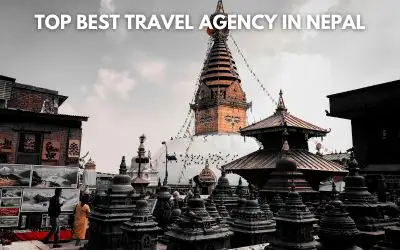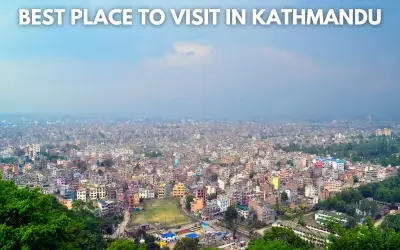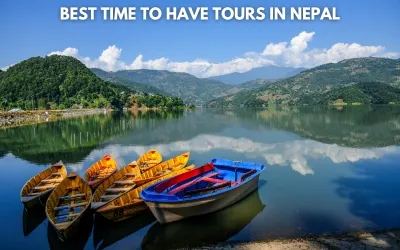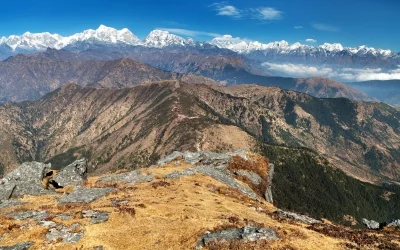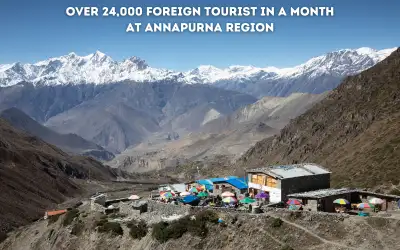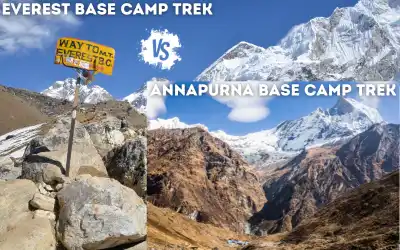Best Time to Trek in Nepal
November 7, 2023Best Time to Trek in Nepal
Nepal is one of the most popular trekking countries in Nepal, which is widely known for the tallest mountain peak in the world, Mt. Everest. As Nepal lies at the foot of the Himalayas, it has opened several trekking routes to trekkers.
Are you one of the trekking enthusiasts looking for treks in Nepal but having no idea when to trek? If you are, then this blog is just for you, as we will talk about the best time to trek in Nepal.
The rich natural and cultural beauty of Nepal attracts several visitors from all over the country. Trekkers are more interested in the natural beauty, including the snow-capped mountain ranges, diverse flora and fauna, and picturesque terraced fields.
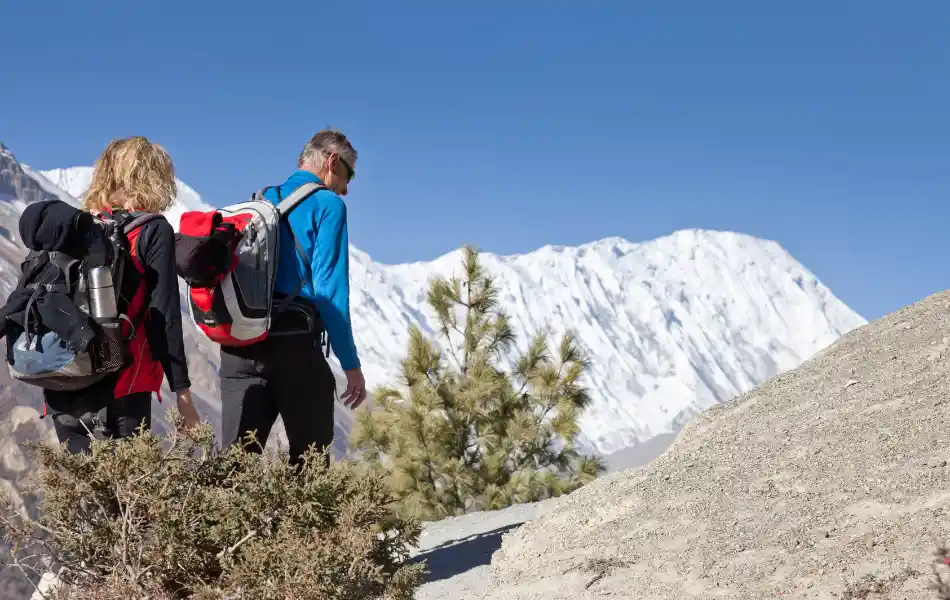
The best of the trekking comes with the best time for the trek. The climate and temperature enhance the beauty of the views around. Do you know? The number of trekkers trekking to different destinations in Nepal is higher in the on-season than in the off-season.
For trekking to be exciting and easy, time must be a factor to consider. The best time for trekking is when the climate and temperature are ideal, the views are at their best, and there are additional natural beauties that fascinate the trekker. Everything mentioned is available in the spring and autumn seasons.
So, spring (March to May) and autumn (September to November) are the best seasons or best times to trek in Nepal. Do you want to trek in Nepal at the best time? Always remember Blue Lake Adventure as your trekking companion, as we offer different trekking packages in different regions of Nepal.
Let’s explore and discuss every trekking season in Nepal and find out why spring and autumn are considered the best times to trek but not winter and monsoon.
Seasons Overview: Which is the best time to trek in Nepal?
Nepal has four seasons, which are spring (March to May), monsoon (June to August), autumn (September to November) and winter (December to February).
Each season holds different features, whereas spring and autumn are more similar than the other seasons. Let’s discuss further the qualities of the different seasons in Nepal. Also, don’t miss out on the trekking tips we will provide at the end of the blog.
Spring (March to May)
Spring is one of the best seasons to trek in Nepal. Most trekkers prefer the spring season as it offers stunning views of the surrounding area, stable and clear weather, a mild temperature, and likely no chance of rainfall.
The spring season starts in the middle of March and ends in May. And since this season comes after the winter season, the temperature is mild and ideal for trekking.
The spring season is best known for the blooming of flowers and the lush green forest that offers picturesque views alongside the mountain ranges. The views of the breathtaking mountain ranges covered with snow in the spring will undoubtedly astound you.
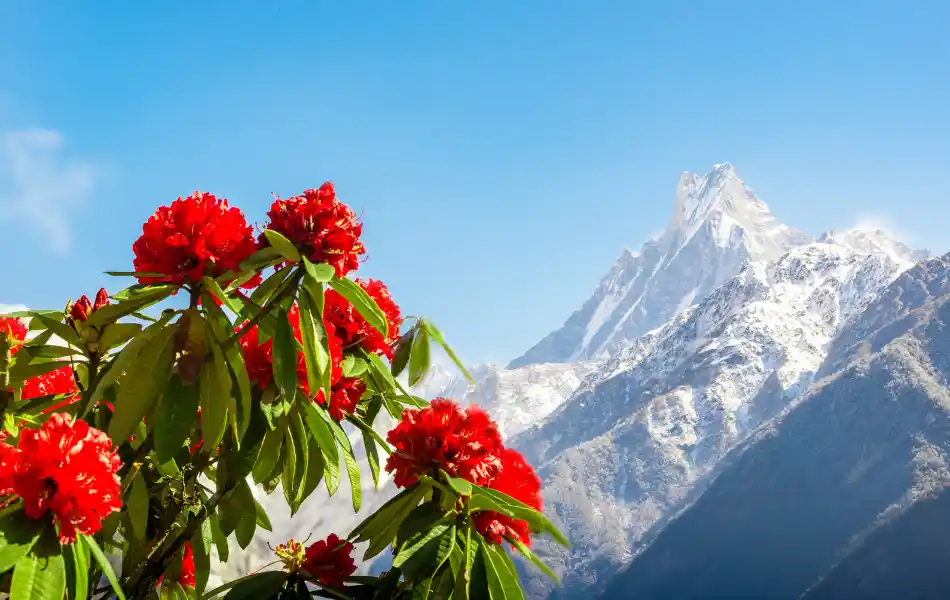
There is less likely to be rainfall, and the weather is mild and sunny. What could be a better season than this for trekking? Moreover, the major highlights of this season are the rhododendrons and other wildflowers that are in full bloom, making the scenery even more beautiful.
Because of this, the Annapurna Base Camp Trek and Everest Base Camp are both popular choices for spring trekking.
Also, do you know the trails are not as crowded as expected so you can enjoy the trekking without getting disturbed or enjoy the views from the viewpoints? In addition, the teahouses are completely operated during this season so you don’t have to worry about the accommodations while trekking.
Monsoon (June to August)
The monsoon season is not an ideal season for trekking in Nepal as it brings heavy rainfall, making it difficult for trekkers to trek on the trails. Although it offers lush green landscapes and vibrant vegetation, the views during this season are not fascinating.
If we are talking about visibility, then all you can see are dark clouds blocking the views of the mountain ranges. With these disadvantages comes risk, too. The trails of all trekking routes are not well-maintained so there are high chances of landslides, which can cause delays on treks.
If you can trek even with heavy rainfall, you can have a maximum of two days of short treks. But it is not recommended as you are unaware of Nepal’s landscapes and anything could happen during this season.
This makes the monsoon season the least popular season for treks in Nepal. As the weather is rainy and cloudy, the temperature is cooler during the day and night.
Autumn (September to November)
Autumn is the after-season of the monsoon, so you can expect a beautiful dust-free environment, lush green forests, and villages filled with joy. In addition to the stunning, clear mountain range view, autumn is one of the best trekking seasons in Nepal.
If you are keen to trek through the landscapes of Nepal, then there is no stopping in the autumn season. Fall offers trekkers consistent, sunny, and clear weather, which they prefer.
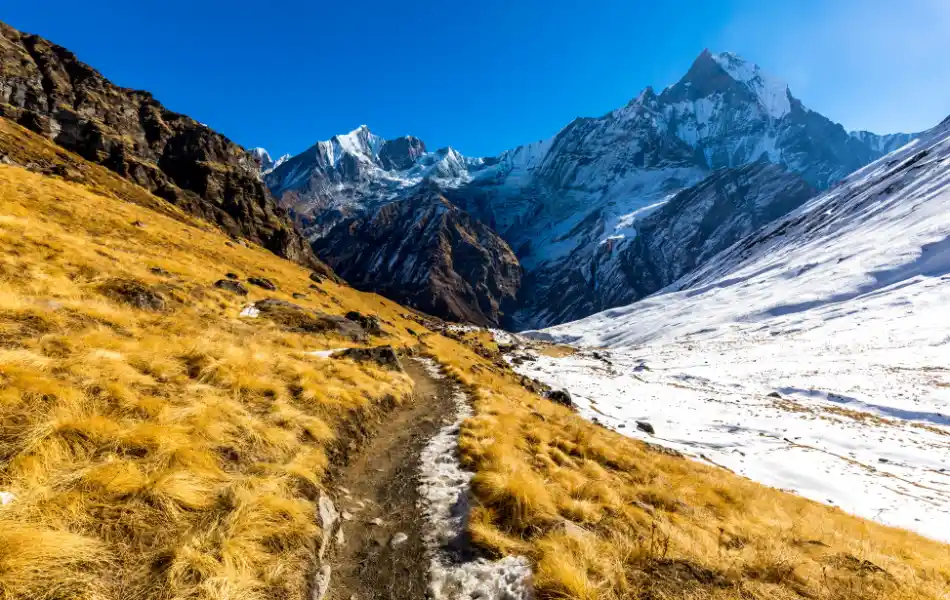
Highlights of this season are the breathtaking views of the surrounding mountain ranges, charming villages, and terraced fields. Fall hiking is made visually appealing by the vibrant colors of the season.
The days are warm while the nights are still cooler at the higher altitudes. Whether it is short treks or long treks in Nepal, autumn is the best time. By the way, would you like to have short treks from Pokhara? Blue Lake Adventure offers trekking to the Annapurna Region starting from Pokhara at the best price with better itineraries.
Winter Season (December to February)
Winter is the least popular, as it is not considered the best time for trekking in Nepal. It can’t be said that trekking is impossible in season but you will not have the best experience of trekking in Nepal.
The weather is chilled and the night’s temperature often gets below freezing at the higher altitudes. If you are planning treks at higher altitudes in the Everest Region, Langtang Region, or Annapurna Region, then you must be well-prepared for the colder nights.
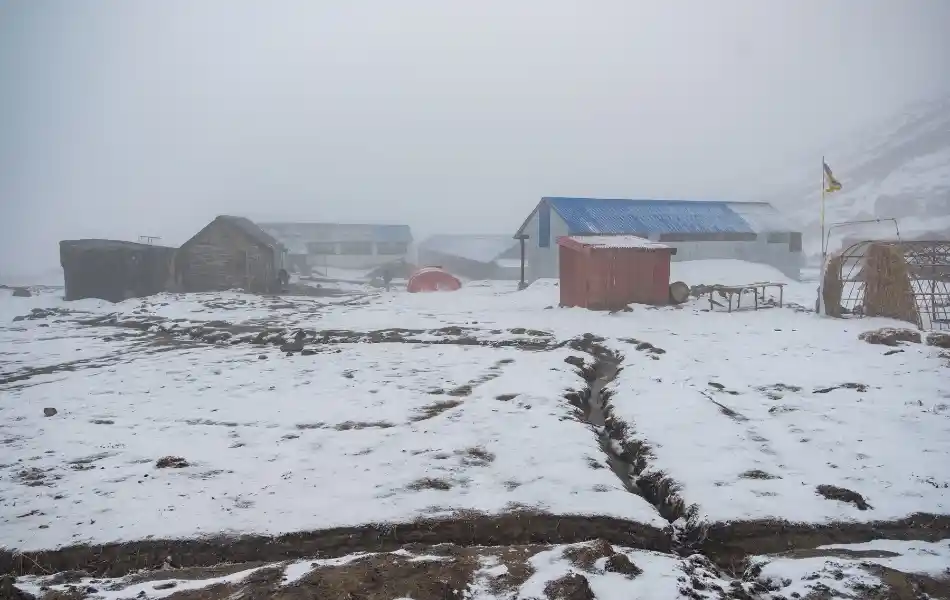
Trekking is completely fine during this season but it is not the best time. The views of the snow-capped mountain ranges are clear but the trails can get snowy during the winter. The good part of the winter season is that there are almost zero chances of getting rainfall.
The trails are less crowded and the winter offers crisp and clear days with good mountain visibility. One who can handle cold conditions and is well-prepared for lower temperatures can do this trek with fewer difficulties.
Additionally, the important thing to consider during this season is altitude sickness. The air gets thinner at higher altitudes, so the chances of getting altitude sickness is higher. So, having proper acclimatization is important if you are planning to trek in the winter season.
Pros and Cons of Trekking in Different Seasons
It is important to know the advantages and disadvantages of trekking in different seasons, as it will help you choose the best time to trek in Nepal.
Here is an overview of the pros and cons of trekking in different seasons:
| Seasons | S.N. | Pros | Cons |
| Spring (March to May) | 1. | Breathtaking scenery of vibrant rhododendron blooms and lush landscapes | Varying temperatures: While the days are warm, the nights at higher altitudes are still chilly. |
| 2. | Clear, dry and sunny weather makes it perfect for hiking or trekking during the day. | Different regions of Nepal can get occasional rainfall during spring | |
| 3. | Better visibility and clear skies offer stunning vistas of snow-capped mountain ranges. | Crowds on the trails and teahouses might cause difficulties for the trekkers. | |
| Monsoon (June to August) | 1. | A beautiful time to see Nepal’s waterfalls and lush green valleys. | Trails are muddy and slippery, creating a risk of landslides due to heavy rainfall. |
| 2. | There are fewer crowds on the trails in comparison to other seasons. | The clouds often blocks the view of the mountain ranges. | |
| 3. | Accommodations and food costs are cheaper. | 3. Flights and buses can be canceled or delayed due to heavy rain. | |
| Autumn (September to November) | 1. | Clear skies and cool temperatures make it ideal for trekking. | The trails are often crowded as it is the peak season for trekking in Nepal. |
| 2. | The stunning views of the mountain ranges in autumn, along with the autumn color, are the best views during the trek. | There is still a risk of getting altitude sickness at higher elevations. | |
| 3. | Opportunities to witness and participate in Nepali festivals | Although the days are warmer, the nights are still cooler. | |
| Winter (December to February) | 1. | Beautiful view of the snow-capped mountain ranges. | Extremely colder nights create the risk of frostbite and hypothermia. |
| 2. | Quieter and less crowded trails | Trails can be icy and dangerous. | |
| 3. | Unique and challenging experience | There is limited availability of the teahouses at higher altitudes. | |
Popular Treks to Have at the Best Time of Trekking
There are several popular treks you can consider doing during the best time. While choosing the trek is in your hands, here are some popular treks in different regions of Nepal.
Everest Region
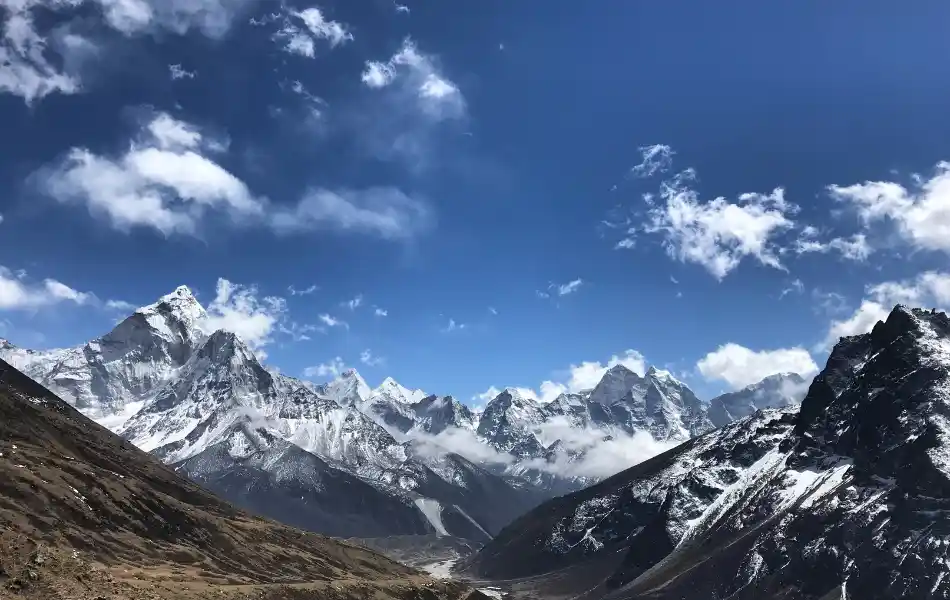
- Everest Base Camp Trek – 13 Days
- Everest Panorama Trek
- Everest Three Passes Trek
- Luxury Everest Base Camp Trek
- Everest View Trek
Annapurna Region
- Australian Base Camp Trek
- Annapurna Sanctuary Trek – 10 Days
- Ghorepani Poonhill Trek
- Annapurna Base Camp Trek
- Annapurna Circuit Trekking
Langtang Region
Manaslu Region
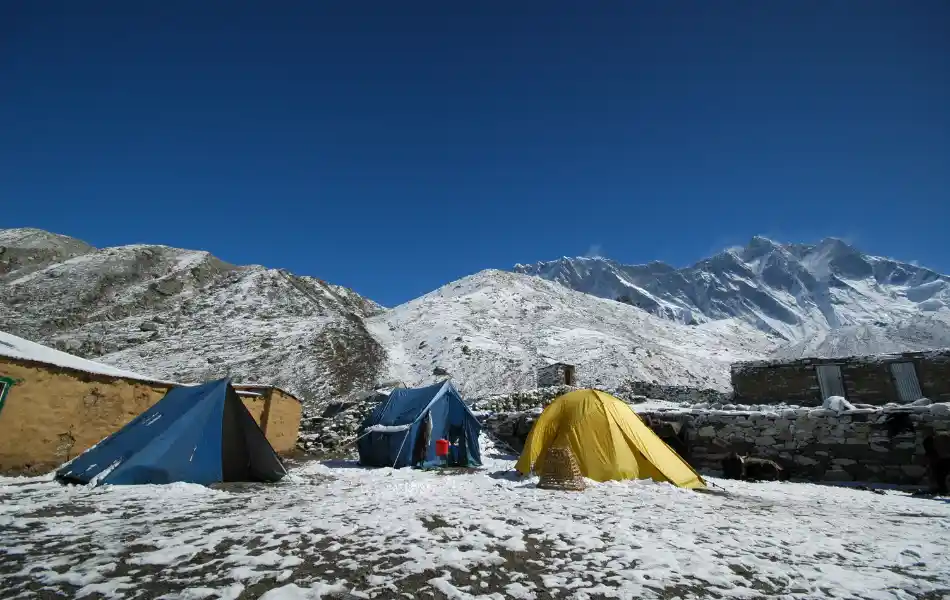
Tips for Trekking in Nepal
Additionally, here are some of the best trekking tips in Nepal that you can consider following to make the trek easier and even more comfortable.
- Plan and prepare for the trek early. You can research the best itinerary and better consider factors like difficulty, duration, and required permits.
- Pack appropriate gear and clothing fit for any type of weather. Also, wear layers of clothes so it can be easier to switch according to temperature.
- If you are trekking at higher altitudes for longer days, it is important to acclimatize properly to adjust your body to the thin air.
- Choose the right trek according to your fitness level and experience. If you are new to trekking, then choosing short treks can be an ideal way to gain some experience.
- Play it smart by packing light. A light backpack will make hiking easier and you might not need to hire a porter.
- Stay hydrated by drinking plenty of water. It is better to carry a hydration system or reusable water bottles so that you can fill up the tap water. Filtering the water is crucial.
- While trekking, take frequent breaks to avoid exhaustion. Also, eat proper meals and snacks that provide you with enough energy.
- Hire a guide or book with an agency for additional safety and easy planning with preparations.
- Prepare physically and mentally, and most importantly, enjoy the trek.
Safety Considerations
Wherever you are trekking, you need to consider safety measures to avoid any accidents or injuries. Trekking in the Himalayas carries an unseen risk that can result in fatal injuries.
Here are some safety considerations that are required, irrespective of the best time for trekking in Nepal.
- Get familiar with the symptoms of altitude sickness, which can include headaches, nausea, dizziness, and shortness of breath.
- As Nepal’s weather conditions are unpredictable, it is essential to be prepared for sudden changes in temperature, precipitation, and wind.
- It is important to be aware of the trail conditions, as while trekking, the trail can change from well-maintained to rugged.
- Be aware of the potential risks associated with wildlife encounters and follow local guidelines for safe interactions.
- It is important to have better physical fitness before attempting a challenging trek, as trekking can be physically demanding.
- It is important to maintain communication with other people who aren’t involved in the trek. For such safety, getting a trip with an agency is beneficial.
- Get travel insurance that covers medical expenses, trip cancellations, and emergency evacuation. Ensure the insurance covers high-altitude activities and trekking in Nepal.
Conclusion: Which is the best season for trekking in Nepal?
In conclusion, you can get the best experience of trekking in Nepal when you do it at the best time. As spring and autumn are the best times to trek in Nepal, these seasons offer the absolute best experience with stunning views of the mountain ranges, lush landscapes, and an opportunity to encounter cultural experiences.
So, it is most important to choose the best time so that you can face fewer difficulties on the trails and enjoy trekking with the best experience. The best time for trekking in Nepal offers stable weather and trekking-friendly temperatures, which make the trek comfortable and easy.
Other than the best time, the off-season is not the ideal time to trek in Nepal as it involves greater risk and the views are often disturbed because of the weather conditions.
Are you interested in trekking in Nepal? We, Blue Lake Adventure, are here to assist you with any queries or trekking packages. Feel free to contact us so that we can reach out to you for additional discussions. To contact us, you can either visit our contact page, send us an email at info@travelagencyinnepal.com or send us a WhatsApp message at +977 9851076943.
FAQs On Best Time To Trek In Nepal
What is the best time to trek in Nepal?
The best time to trek in Nepal is typically during the spring (March to May) and autumn (September to November). These seasons offer absolutely stunning views of the mountain ranges with clear skies. The weather is clear and sunny and the temperature is hiking-friendly.
What are the different trekking seasons in Nepal?
There are two main trekking seasons in Nepal: autumn (September to November) and spring (March to May). The monsoon season is avoided for trekking in Nepal, as this season gets heavy rainfalls that make trekking difficult. However, treks are often done in the winter, although the temperatures drop below freezing at higher altitudes.
Which month is best for trekking in Nepal?
October and November of the autumn and April of the spring are the peak trekking months in Nepal. Trekking in these months provides you the best experience with the stunning views of mountain ranges, landscapes, natural beauty, traditional villages, etc.
What is the best time to trek to Everest Base Camp?
The best times to trek at Everest Base Camp are in the spring and autumn seasons. You can go trekking to EBC in these seasons to have the best experience with less difficulty. However effective planning and preparation is required before embarking on the journey to Everest Base Camp.
Is winter a good time for trekking in Nepal?
Winter (December to February) can be suitable for trekking in lower altitudes like the Annapurna foothills, where the weather is cold but relatively stable. High-altitude treks may have more challenging conditions during this season.
Are permits required for trekking in Nepal, and how can I obtain them?
Yes, permits are necessary for trekking in Nepal. Every trekker is required to obtain necessary permits, like the TIMS (Trekkers’ Information Management System) card and the permits of different restricted regions of Nepal.


